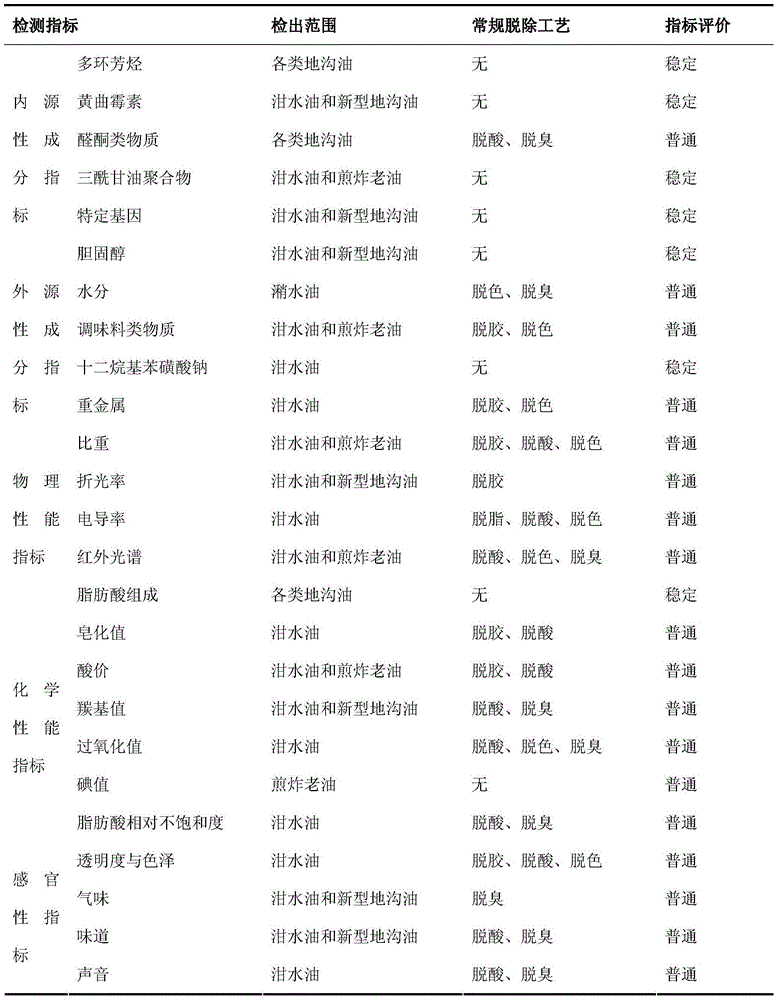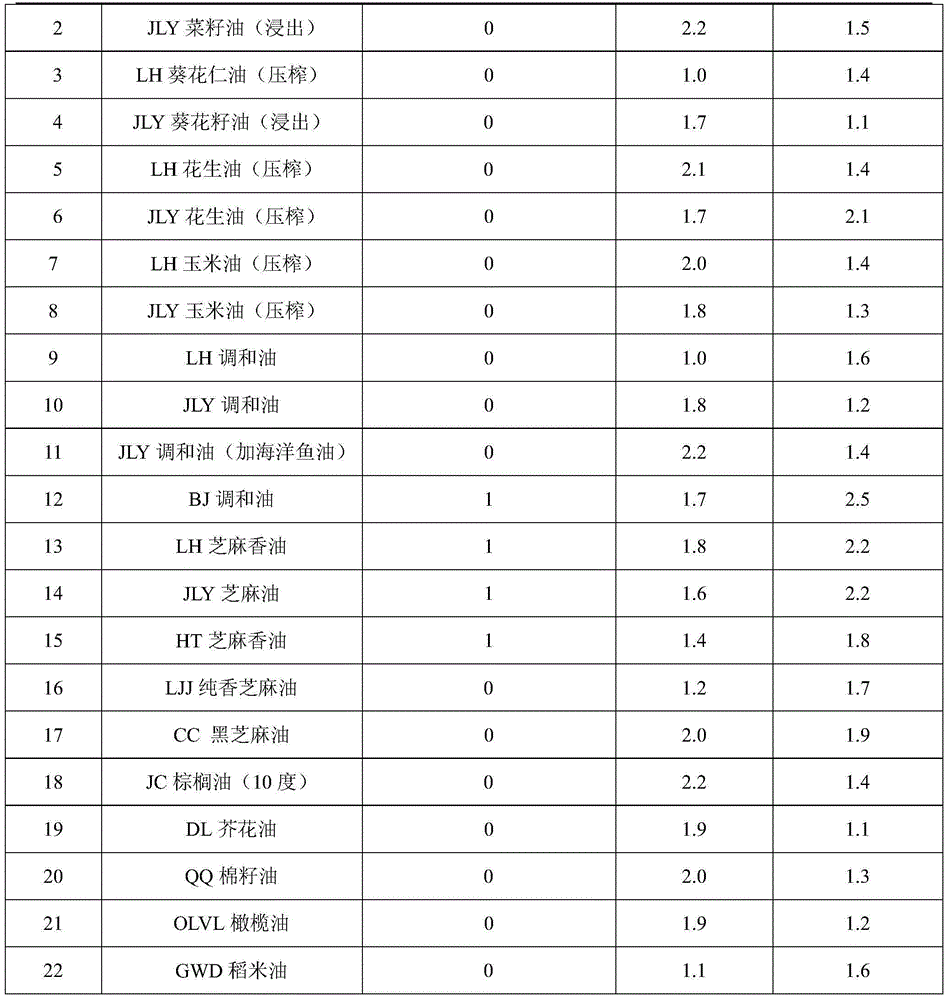Method for rapidly, simply and conveniently detecting illegal cooking oil
A detection method and technology for waste oil, which are applied to measurement devices, material analysis by electromagnetic means, instruments, etc., can solve problems such as short time consumption, and achieve the effects of accurate results, fast detection, and simple and convenient technology.
- Summary
- Abstract
- Description
- Claims
- Application Information
AI Technical Summary
Problems solved by technology
Method used
Image
Examples
Embodiment 1
[0022] Example 1: Determination of the conductivity (μs / cm) of ultrapure water.
[0023] The conductivity (μs / cm) of ultrapure water was measured with a conductivity pen, and the results are shown in Table 2.
[0024] Table 2 Conductivity of ultrapure water (μs / cm)
[0025] 1 2 3 4 5 average value Three function TDS pen 0 0 0 0 0 0 DDB-303 Conductivity Meter 1.0 0.9 1.0 1.0 0.9 0.96
[0026] *The conductivity pen used is the "three-function TDS pen" (water quality testing pen / conductivity pen) provided by Guangzhou Jingjian Water Purification Equipment Co., Ltd., and the DDB-303 conductivity meter is produced by Shanghai Jinhuan Instrument Co., Ltd. The same below.
Embodiment 2
[0027] Embodiment 2: Determination of conductivity (μs / cm) of nonionic surfactant in dehydrated ions.
[0028] The conductivity (μs / cm) of the nonionic surfactant in ultrapure water was measured with a conductivity pen, and the results are shown in Table 3.
[0029] Table 3 Conductivity of nonionic surfactants in ultrapure water (μs / cm)
[0030] AEO-5 Three function TDS pen DDB-303 Conductivity Meter 100 times* 17 16.7 200 times 8 9.2 400 times 3 5.4 800 times 1 3.3 1000 times 0 2.7 1500 times 0 2.1 2000 times 0 1.7 3000 times 0 1.5 4000 times 0 1.4 5000 times 0 1.0
[0031] *The dilution ratio of non-ionic surfactants in water, the same below.
Embodiment 3
[0032] Embodiment 3: the function test of nonionic surfactant in sample oil
[0033] (1) Conductivity of waste oil and ultrapure water mixture. According to the mixture of waste oil and ultrapure water, the mixing ratio is, waste oil: ultrapure water = 1:1, obtain the water phase below, and measure the conductivity (μs / cm) in the ultrapure water with a conductivity pen. Results The measurement values of sample A in Table 4, where the waste oil comes from Sanshui, Foshan.
[0034] (2) Conductivity of waste oil and nonionic surfactant mixture. Mix waste oil with non-ionic surfactant. The waste oil comes from Huizhou. The surfactants are AEO5 and NP4 respectively. The mixing ratio is: waste oil:surfactant=19:1. Then, the mixed solution was diluted 50 times with ultrapure water, and the conductivity of the aqueous dispersion of the sample oil was measured. The results are shown in Table 4 as measured values B and C.
[0035] Table 4 Effects of nonionic surfactants on sampl...
PUM
 Login to View More
Login to View More Abstract
Description
Claims
Application Information
 Login to View More
Login to View More - R&D
- Intellectual Property
- Life Sciences
- Materials
- Tech Scout
- Unparalleled Data Quality
- Higher Quality Content
- 60% Fewer Hallucinations
Browse by: Latest US Patents, China's latest patents, Technical Efficacy Thesaurus, Application Domain, Technology Topic, Popular Technical Reports.
© 2025 PatSnap. All rights reserved.Legal|Privacy policy|Modern Slavery Act Transparency Statement|Sitemap|About US| Contact US: help@patsnap.com



